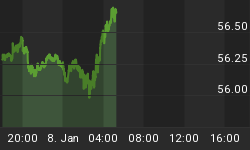The Weekly Leading Index (WLI) of the Economic Cycle Research Institute (ECRI) has turned down for the second consecutive week. See figure 1 a weekly chart of the SP500 with the WLI in the lower panel.
Figure 1. SP500 v. WLI/ weekly
![]() Larger Image
Larger Image
Several caveats regarding the WLI are worth pointing out. One, the prior initial downturns in the WLI following the Federal Reserve's market interventions (i.e., quantitative easings) signaled the end of the equity rally. These downturns in the indicator are noted by the pink vertical bars. For example, you have QE2 in quarter 3, 2010, and the first downturn in the WLI occurred in January, 2011. The market went into a 6 month price range before falling 20% over the next 4 weeks. This led to Operation Twist in quarter 3, 2011, which was the next Fed intervention to support the markets/ economy. Two, note how the current value of the WLI is barely above the zero line. In addition, the initial QE produced a much greater economic impact (i.e., higher WLI) then subsequent iterations, or to put another way, QE might be becoming an ineffective policy tool. If the WLI is rolling over now, then this certainly would be noteworthy.
In summary, the ECRI's WLI is rolling over as a period of market intervention (quantitative easing) is coming to an end. Prior occurrences in 2010 and 2011 signaled market tops and lower equity prices (i.e., better buying opportunities) over the next couple of months.
















